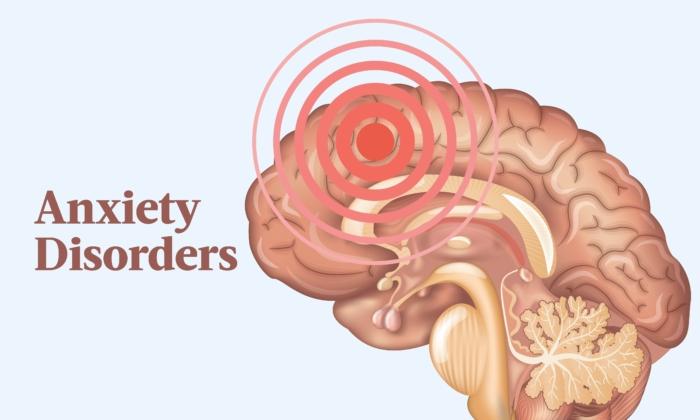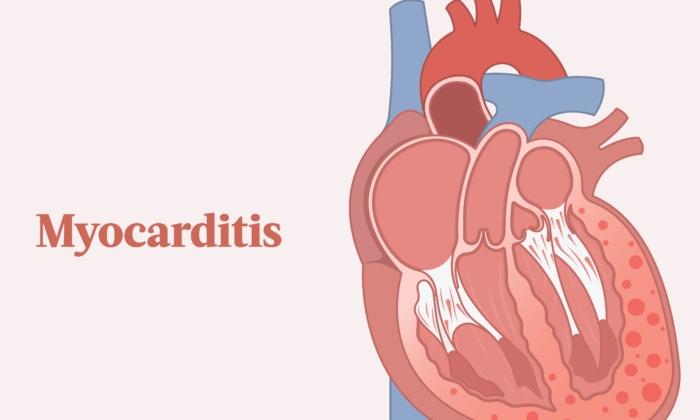The human body is an electrochemical miracle. While we often think of it as a fleshy machine of sorts, it can be more likened to a constantly changing collection of chemicals and electrical signals that’s continuously rebuilding itself and responding to your mental state, food, air intake, physical activity, and environment.
This biochemical landscape of the human body is in delicate balance. An unfathomable series of reactions transforms the molecules of the food you eat and the air you breathe into the components of your body and the energy that fuels it.
Aluminum upsets the ebb and flow of a number of key molecules that play critical roles in balanced systems within the body, leading to serious health complications.
Routes of Aluminum Exposure
Aluminum is the most abundant metal in the crust of the Earth. It has beneficial properties important to many industries.Aluminum weighs much less than steel, and it’s easily machined, durable, and resistant to corrosion. It can conduct electricity well and can be recycled many times over. The aluminum industry is massive and growing.
Aluminum in Food
For most individuals, food is a main source of aluminum exposure and may contribute to as much as 95 percent of aluminum concentration in the body, according to a research review article published in the French journal Médecine et Maladies Infectieuses.Many fruits and vegetables naturally contain small amounts of aluminum.
Of bigger concern are processed foods that include aluminum as an approved food additive.
Salim Saiyed and Robert Yokel of the University of Kentucky used spectrometry to quantify the amount of aluminum in some commonly eaten processed foods. They found that the aluminum content in the foods they tested ranged from 1 to 27,000 milligrams of aluminum per kilogram of food.
In the study, cheese tested from frozen pizzas had as much as 14 mg of aluminum per serving. The aluminum came from sodium aluminum phosphate, an FDA-approved food additive. The same amount of cheese in a restaurant pizza had less than 1 mg of aluminum.
Saiyed and Yokel found that sodium aluminum phosphate was present in many food products. Baking powder, ready-to-eat pancakes, and several pancake and waffle mixes had the most aluminum out of all the foods tested. Some of these foods had up to 180 mg of aluminum per serving.
Aluminum in Water
Aluminum is not just in processed food; it can leach from soil and rock into water sources. In fact, aluminum’s prevalence in the Earth’s crust means it’s found in all natural waters.Other Sources of Aluminum
It’s well-known that antiperspirants contain aluminum. The metal is also found in cosmetic, hygiene, and hair products. Sunscreen frequently contains aluminum, as it prevents titanium dioxide particles from clumping.Certain antacids, such as Maalox, contain aluminum hydroxide. Long-term use of these contributes to an increased aluminum load in the body.
Aluminum hydroxide is also used as a dye in the coating of some buffered aspirins. The dye FD&C yellow #6 aluminum lake is one example.
In the medical industry, injectable preparations may contain aluminum. Parenteral nutrition solutions are used to provide nutrition to patients who cannot efficiently absorb nutrients through their small intestine.
The regulation requires that a warning be inserted in all these products that includes the following: “Research indicates that patients with impaired kidney function, including premature neonates, who receive parenteral levels of aluminum at greater than 4 to 5 [micro]g/kg/day accumulate aluminum at levels associated with central nervous system and bone toxicity. Tissue loading may occur at even lower rates of administration.”
This means that for a premature baby, a toxic dose of aluminum would be approximately 8 to 28 mcg.
If a premature baby cannot tolerate more than 28 mcg of aluminum at most, can we assume all full-term newborn babies will be able to handle a 250 mcg aluminum load without adverse effects?
Where Does Absorbed Aluminum Go?
After it’s absorbed, aluminum is distributed widely to various tissues. Some of the aluminum is excreted in the urine, so long as the individual doesn’t have kidney disease. The aluminum that isn’t excreted accumulates in the bones, liver, lungs, and brain, according to the Médecine et Maladies Infectieuses review.Accumulation of Aluminum in Bones
Most of the aluminum that gets absorbed binds to the transport protein transferrin, notes a case report published in the Journal of Pediatric Gastroenterology and Nutrition.Transferrin is created by the body to bind iron and carry it throughout the body. Iron is particularly important in bone homeostasis.
While the transferrin would typically transfer iron to bone, the presence of absorbed aluminum causes the protein to transfer aluminum instead. It’s well-documented that aluminum accumulates in the bone tissue of those with chronic kidney disease and in patients receiving long-term parenteral nutrition due to intestinal issues.
Your bones are constantly breaking down old bone material and creating new bone material. The specialized cells that build new bone are called osteoblasts. These cells create collagen and other proteins, then mineralize the surrounding matrix to form new bone.
In bone growth, the area being constructed has a face called the mineralization front. At this front, osteoblasts lay down new collagen fibers and calcium is accumulated there.
In aluminum-based bone pathogenesis, aluminum preferentially binds to the unmineralized collagen. The result is impaired bone mineralization and a condition of weakened bone tissue, called osteomalacia.
Accumulation of Aluminum in the Brain
While aluminum accumulation in the bones is concerning, what is more alarming is aluminum accumulation in the brain. Post-mortem studies have found the presence of aluminum in the brains of deceased individuals.When aluminum-bound transferrin reaches the blood-brain barrier, it binds to transferrin receptors. These aluminum-transferrin receptor complexes are then brought into cells associated with the blood-brain barrier.
There’s no known biological role for aluminum in the brain. It’s not part of normal brain biochemistry. Instead, aluminum is highly disruptive to a large number of metabolic pathways in the brain. Decades of research reveal that aluminum is neurotoxic. What is unclear is how much aluminum is too much. For example, is the concentration of aluminum in the brains of individuals with Alzheimer’s disease, multiple sclerosis, or autism spectrum disorder higher than in individuals who don’t have any of these conditions?
The analysis included 191 tissue samples from 20 control brains. The control donors had no diagnosis of neurodegenerative disease.
Exley and Clarkston compared the control data to samples of brain tissue from donors who had a diagnosis of Alzheimer’s disease (12 patients), multiple sclerosis (14 patients), and autism spectrum disorder (five patients).
Notably, all three disease groups had significantly higher brain content of aluminum. This held true for any statistical analysis that was applied.
Further, all the studied disease groups had the “characteristics of significant focal deposits of aluminium throughout all main lobes of the brain and associated neuropathology and neurodegeneration,” the researchers wrote.
Interestingly, increased aluminum content was not associated with increased age. These data suggest that perhaps aluminum accumulation in the brain is not an inevitable part of aging.
While the study doesn’t give the mechanism of toxicity, it implicates aluminum in these particular neurodegenerative diseases.
In vitro cell studies reveal the mechanisms by which aluminum disrupts the delicate metabolic pathways in the human body. Researchers are also able to reproduce several neuropathologies of human neurodegenerative disease in animal models by exposing them to aluminum.
All of these studies give us a bigger picture of the role aluminum plays in brain pathology. The current data on the molecular dysregulation of healthy cells by aluminum toxicity are vast.
Protecting Yourself From Aluminum Toxicity
Exposure to aluminum is unavoidable, but there are ways to protect yourself from the toxic effects.First, certain trace elements are protective.
Silicon occurs naturally in the form of silica, which is a transparent compound found in many rocks and in water. Certain water sources have higher amounts of silica than others. For instance, water obtained from artesian wells in Fiji (bottled by Fiji Water) has a significant amount of silica. Unfortunately, many other kinds of bottled drinking water, such as Aquafina, are produced using reverse osmosis, which removes naturally occurring silica.
Selenium, another trace element that helps to protect against aluminum neurotoxicity, is a component of glutathione peroxidase, one of the most important antioxidants produced by the body.
Glutathione is biologically effective when it’s in its reduced form. The enzyme glutathione reductase is essential for replenishing the reduced form of glutathione in cells.
These same researchers found that zinc has an antiapoptotic effect (prevents cell death) in aluminum-exposed animals.
In addition to these trace elements, eating a diet high in polyphenols helps to protect you against the toxic effects of aluminum. Polyphenols are antioxidants that can be found in fruits, vegetables, and whole grains.
Finally, chelation therapy, which uses special supplements and drugs to bind metals in your body and remove them through excretion, can help to protect you.
Zeolites, also used as chelators, are porous minerals with numerous cavities and molecular channels. In nature, these cavities are filled with positively charged ions, such as sodium, magnesium, and calcium.
Zeolites are known for their excellent ion exchange properties—the zeolite can release the sodium, magnesium, and calcium, and take in metal cations (positively charged ions or a group of ions) such as aluminum. The metals settle in the zeolite cavities, and the zeolites pass easily through the kidneys, allowing the metals to be excreted out of the body.
The main zeolite used for medicinal purposes is a natural zeolite called clinoptilolite.
While we can’t completely avoid aluminum, eating foods that are not highly processed is one powerful way to protect yourself from aluminum overload. Another way to protect yourself is to eat a diet high in fruits and vegetables. Supplement with selenium and zinc, and drink some Fiji water each week. Read the labels on your lotions, sunscreens, and other personal care products. Avoid antiperspirants with aluminum. Finally, consider working with your doctor to find a quality EDTA or clinoptilolite product and complete a chelation regimen.






